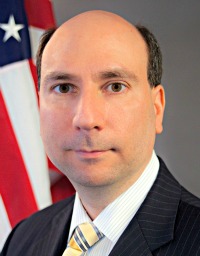Decisions on changing U.S. equity market structure need to be based on hard data and not opinion, according to the winner of a $2.5-million government contract to provide the Securities and Exchange Commission with a real-time system to track market activity for equities and options.
Tradeworx of Red Bank, N.J. was awarded a contract last month to provide the SEC with a real-time data service to provide trading and quoting information. The data will better help the SEC to surveil and analyze markets. Manoj Narang, the chief executive officer of Tradeworx, a high-frequency trading firm, has been one of HFT’s staunchest defenders.

“It’s been frustrating to hear people with varying agendas put forth all kinds of so-called ‘academic studies’ that support their points of view about market structure,” Narang told Traders Magazine in an e-mail while on vacation in Europe. “Equally frustrating to many people is the SEC’s historical propensity to survey the public’s opinions as a way of discovering facts about the market. In my mind, it would inspire much more investor confidence in the market if the SEC could reach its OWN conclusions about how the market functions without having to rely on outside opinions, which tend to be highly motivated by self-interest.”
The SEC currently does not have real-time data feeds at the moment. The cost will be $2.5 million a year for the first year, according to the agency. A formal request for proposal for a real-time data provider was issued by the SEC in November 2011 and Tradeworx won the contract seven months later.
Narang said the rationale behind making his proprietary technology available to the regulators was to give them equal footing data-wise with the traders they are trying to police.
“It’s because I’ve long been a vocal proponent of data-driven decision-making when it comes to the market’s rules and regulations, but that presupposes that policy-makers have the data and tools they need to engage in such an activity,” Narang wrote. “So we decided to put our money where our mouth is and offer up our data and tools to the regulators, so that they would be endowed with the ability to see the market with the same level of detail and insight as the top-tier market participants they are supposed to be policing.”
The SEC voted on July 11 and passed a rule requiring the exchanges and a broker oversight group to build a single trade-data reporting system to monitor and analyze activity across U.S. equity and options markets. That, however, will not be in real time, as the SEC commissioners bowed to industry pressure.
The consolidated audit trail (CAT), which remains to be built, will allow regulators to reconstruct market events and crises, giving them an inside look at the markets. The system will either be based off of existing platforms, such as OATs, or built from scratch.
A shortcoming of CAT is that the mandate from the SEC did not require data to be provided in real time. Rather, data must be made available by 8 a.m. the following morning. Opponents of CAT argued real-time data provision would be too costly.

However, the agreement with Tradeworx addresses CAT’s shortcomings, as the SEC will still have access to real-time data and trade information. It also saves the industry a bundle in costs. Not only will the regulator get the trade data it needs to conduct investigations into the market, but it will get it faster. Data will be sourced from all U.S. stock exchanges and the Options Price Reporting Authority.
Gregg Berman, senior advisor to the director of the division of trading and markets at the SEC, said in an interview that the new system will serve as a complement to CAT and provide the SEC with the same speed, ease and reliability of data collection and analysis that is available to sophisticated market participants. Also, the regulator will be able to quickly collect, store, aggregate, monitor, query, manipulate and analyze equity and options data.
Berman added the SEC is in the process of creating a new group to analyze and monitor the data, the office of analytics and research, which falls within the division of trading and markets. The group, headed by Berman, includes quants, programmers and other market specialists to examine the data and monitor the markets’ functionality.
The division of enforcement and the office of compliance inspections and examinations will also have access to the data. Roughly two dozen staff members in the four divisions will be users of the system.
SEC Chairman Mary Schapiro has said numerous times that a consolidated audit trail and trade data surveillance are important to the integrity and proper functioning of the markets.
“A CAT that accurately tracks orders throughout their lifecycle and identifies the broker-dealers handling them will provide us with an unprecedented ability to effectively oversee the markets we regulate,” she said after the July 11 vote on CAT. “The rule is a great leap forward.”




